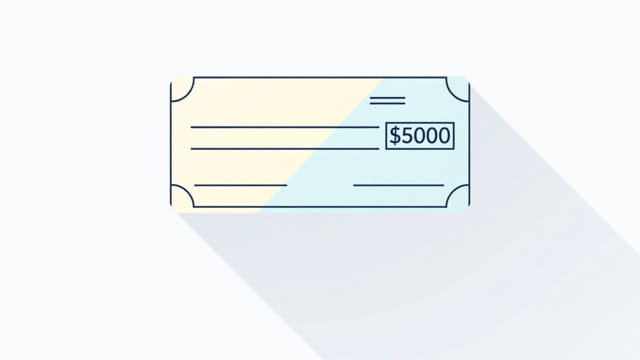In everyday transactions, we often handle paper money without giving much attention to the small printed numbers on them. However, each banknote carries a unique serial number that serves a significant role in identifying, tracking, and authenticating the note. Whether you’re concerned about counterfeit money, collecting rare bills, or just curious, learning how to check a banknote serial number can provide insight into a note’s legitimacy and potential value. These serial numbers are much more than just random digits they offer a gateway into understanding currency issuance and circulation history.
What Is a Banknote Serial Number?
A banknote serial number is a unique alphanumeric code printed on a currency note to identify it individually. No two banknotes within the same currency series and denomination should have the same serial number. Typically located on the front of the note, this identifier helps central banks, collectors, and financial institutions track currency for security and documentation purposes.
Purpose of Banknote Serial Numbers
The primary functions of serial numbers on currency include:
- Anti-counterfeiting: Ensures each note is traceable and helps in detecting fraudulent duplicates.
- Inventory and tracking: Banks and financial institutions use serial numbers to manage the movement of money.
- Collector interest: Some serial numbers are rare and can make a note more valuable to collectors.
- Currency lifespan management: Central banks may use serial data to identify worn or damaged notes and withdraw them from circulation.
How to Locate the Serial Number
On most banknotes, the serial number can be found in one or two locations, often printed in black or red ink. The placement varies depending on the country and note design, but it’s usually found:
- On the front side of the note
- In the top right or bottom left corner
- Printed twice on some notes for extra security
The number may consist of a combination of letters and numbers, sometimes indicating the note’s printing location, series year, or issue sequence.
Types of Interesting Serial Numbers
Not all banknote serial numbers are created equal. Some patterns attract special attention from collectors and currency enthusiasts. Here are a few types of desirable serial numbers:
- Repeater: A sequence that repeats, like 43434343
- Radar: A palindrome, such as 12344321
- Solid: All digits are the same, e.g., 77777777
- Ladder: Sequential numbers like 12345678 or 87654321
- Binary: Only two digits used, such as 01010101
- Low numbers: Such as 00000001 to 00000100, often highly collectible
- High numbers: Notes with serials near the maximum possible, like 99999999
These unique sequences can significantly increase a banknote’s value in the collector market, especially if the note is in pristine or uncirculated condition.
How to Check a Banknote Serial Number
Checking a banknote serial number involves more than just reading the printed digits. Here’s how to do it effectively:
1. Inspect for Authenticity
Ensure the serial number looks consistent with the rest of the note. It should be properly aligned, printed in correct ink, and not look blurry or altered. Mismatched or missing serial numbers are red flags for counterfeit currency.
2. Compare with a Reference
If you suspect a note is fake or want to confirm its legitimacy, compare the serial number to official currency examples provided by central banks. Many countries publish details about currency series, including formatting of serial numbers.
3. Use Online Tools or Databases
Several websites and mobile apps allow you to input a serial number to see if it’s part of a known limited run or rare print. These tools can help collectors or the curious assess the note’s potential value or history.
4. Consult a Collector or Expert
If you believe your banknote has a valuable or unusual serial number, you can contact a currency expert or numismatist. They can help authenticate and appraise the note accurately.
What to Watch for in Counterfeit Notes
Serial numbers are one of many features to examine when detecting counterfeit currency. Here’s what to look for:
- Inconsistent font or size: Real notes have uniform printing.
- Serial numbers mismatched: Both numbers on the note should be identical.
- Blurry or faded digits: Indicates poor-quality reproduction.
- No UV or magnetic ink response: Real serial numbers often use special inks.
If you suspect a note is fake, do not attempt to use it. Report it to your local bank or law enforcement agency for proper handling.
Serial Numbers and Note Series
Every currency note belongs to a specific series issued in a given year or range of years. The serial number, along with accompanying letters or prefixes, can indicate the series. For example, in U.S. banknotes:
- A prefix letter might indicate the Federal Reserve Bank that issued the note.
- The suffix can reflect a reprint or modification to the design.
- Changing the series year may happen when a new Treasury Secretary is appointed or a significant design element is altered.
Understanding these series details can further help in evaluating the age and rarity of a note.
Using Banknote Serial Numbers for Recordkeeping
Businesses and individuals handling large amounts of cash often record serial numbers for accountability and theft protection. This is especially common in:
- Casinos and gaming operations
- Retailers with high-value cash transactions
- Law enforcement during evidence processing
- Collectors who inventory their holdings
In some cases, recorded serial numbers have helped trace stolen or counterfeit money and support investigations.
Banknote serial numbers are far more than an overlooked detail. They are a powerful tool in identifying authenticity, tracking financial transactions, and even discovering collectible gems in your wallet. Whether you’re a casual observer, a concerned consumer, or a seasoned collector, paying attention to these unique identifiers adds an extra layer of awareness to how currency functions in our lives. Checking banknote serial numbers might just uncover a rare treasure or protect you from accepting a counterfeit.
